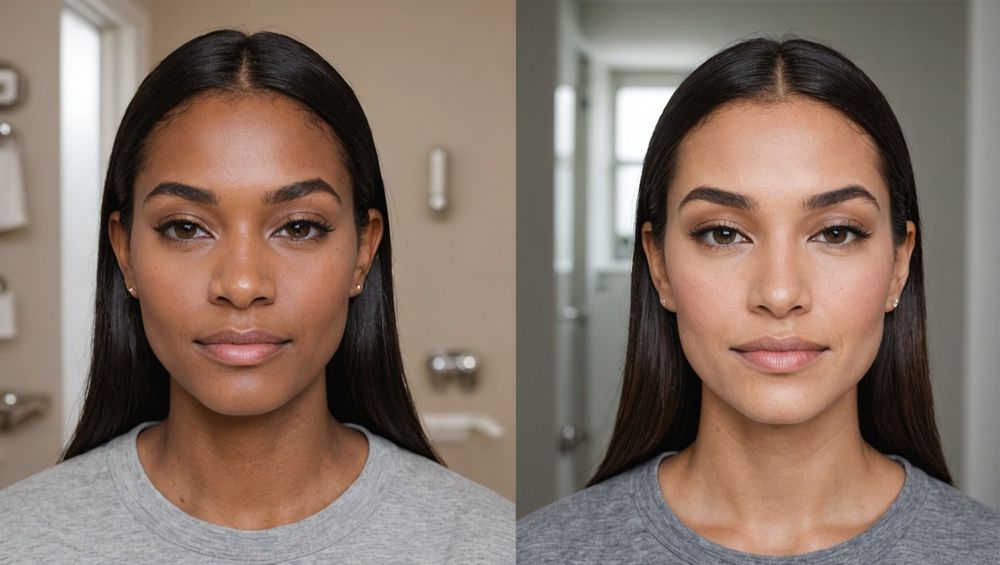Sebum plugs are pesky skin issues that many people encounter, often without realizing what they actually are. These small, often inconspicuous clogs can lead to larger skin concerns if not addressed properly. Understanding sebum and how it interacts with your skin is essential for maintaining healthy pores. By exploring various methods of removal and prevention, individuals can regain control over their skin’s appearance and health. The significance of addressing sebum plugs extends beyond mere aesthetics; it also plays a critical role in overall skin vitality and hygiene. Let’s delve deeper into understanding these enigmatic skin formations.
Understanding Sebum and Its Function

Sebum is a natural oily substance produced by the skin’s sebaceous glands. Its primary purpose is to lubricate and waterproof the skin and hair, creating a protective barrier. Additionally, sebum possesses antimicrobial properties that help safeguard the skin against harmful bacteria and fungi. However, an overproduction of sebum can lead to various skin ailments, including sebum plugs. This overproduction often stems from hormonal fluctuations, lifestyle choices, and environmental factors. A balanced level of sebum is crucial for maintaining proper hydration and skin texture.
The sebaceous glands are small glands located in the dermis layer of the skin, and they’re responsible for producing sebum. These glands are associated with hair follicles and are found all over the body, except for the palms and soles. When the sebaceous glands become overactive, they can produce excessive amounts of sebum, leading to blockages. This process often results in clogged pores, forming what we know as sebum plugs. Understanding the role of these glands is key to addressing and preventing skin issues. Proper care can help regulate their function and avoid the onset of sebum-related skin conditions.
What Are Sebum Plugs?

Essentially, sebum plugs are formed when excess sebum and dead skin cells combine to create a blockage in hair follicles. These plugs can appear as small, skin-colored bumps or may darken, mimicking the appearance of blackheads. Unlike blackheads, which are open to the air and oxidize, sebum plugs are often not exposed, making them less visible. It’s important to differentiate between these conditions for effective treatment. Understanding the characteristics of sebum plugs provides a clearer picture of how to approach removal and prevention strategies. Many people mistake them for acne-related issues, which can lead to improper treatments.
Causes of Sebum Plug Formation
Multiple factors can contribute to the formation of sebum plugs, and recognizing these can aid in prevention. Below are some of the most common causes:
- Hormonal Changes: Fluctuations in hormones, especially during puberty, menstruation, or hormonal therapies, can lead to increased sebum production.
- Poor Skincare Habits: Inconsistent cleansing or using heavy cosmetic products can clog pores and promote the formation of sebum plugs.
- Diet and Lifestyle Factors: A diet high in sugar or unhealthy fats may exacerbate sebum production, while lack of hydration can also contribute.
- Environmental Influences: Pollution, humidity, and other environmental factors can affect skin and sebum levels, creating an ideal environment for clogged pores.
Signs and Symptoms of Sebum Plugs
Identifying the signs of sebum plugs is crucial for early intervention. Visually, these formations may resemble tiny whiteheads or flesh-colored bumps on the skin. They may not cause any discomfort but can lead to a rough or uneven skin texture. Sometimes, they may become inflamed, especially if they obstruct hair follicles. Other signs to look for include:
- Changes in skin texture
- Increased oiliness in the area
- Potential inflammation or redness
Sebum plugs predominantly occur in specific areas of the body due to higher concentrations of sebaceous glands. The most common places include:
- Face
- Back
- Chest
- Shoulders
| Area | Likelihood of Sebum Plugs |
|---|---|
| Face | High |
| Back | Moderate |
| Chest | High |
| Shoulders | Moderate |
How to Remove Sebum Plugs
Eliminating sebum plugs can be achieved through various methods. Depending on the severity of the plugs, different tactics may be more effective. Below are some universally recognized approaches:
Home Remedies
Many people prefer using natural treatments to address sebum plugs. Some effective home remedies include:
- Steam Therapy: Steaming the face opens pores, making it easier to remove plugs.
- Honey and Sugar Scrub: A gentle scrub can help exfoliate dead skin and clear clogged pores.
- Clay Masks: Utilizing clay masks can absorb excess oil and draw out impurities.
Over-the-Counter Products
For those seeking immediate relief, plenty of over-the-counter products can assist in treating sebum plugs. Key products include:
- Salicylic Acid Exfoliants: Known for penetrating pores and preventing clogging.
- Retinoids: Help promote skin turnover and reduce sebum production.
- Non-comedogenic Moisturizers: Keep skin hydrated without clogging pores.
Professional Treatments
For persistent or severe cases, seeking professional help may be the best option. Dermatologists often recommend treatments such as:
- Extractions: Manual removal of sebum plugs by a professional.
- Chemical Peels: Treatments to exfoliate the skin more thoroughly.
- Laser Therapy: Helps in long-term reduction of sebaceous gland activity.
Prevention of Sebum Plugs
Taking preventive measures can significantly reduce the risk of sebum plugs forming in the first place. Establishing an appropriate skincare routine plays a key role; here are some practical tips:
- Cleanse your skin daily to remove excess oil and dirt.
- Use non-comedogenic products to minimize the risk of clogged pores.
- Exfoliate regularly to slough off dead skin cells and prevent build-up.
- Maintain a balanced diet, rich in fruits, vegetables, and plenty of water.
A well-structured skincare routine can make all the difference in maintaining skin health. Here’s a simple guideline:
- Choose a gentle cleanser suited for your skin type.
- Incorporate an exfoliant into your routine 2-3 times a week.
- Apply a suitable moisturizer to keep skin hydrated but not oily.
- Consider using a toner to balance skin pH after cleansing.
Conclusion
Sebum plugs may seem like mere nuisances, but understanding their origins and how to manage them is essential for maintaining healthy skin. By focusing on effective removal methods and adopting preventive habits, individuals can significantly reduce the chances of encountering sebum plugs in the future. With a commitment to a proper skincare regimen, you can not only address existing issues but prevent new ones from forming. Remember, a well-cared-for complexion is essential for both aesthetic and health reasons. Don’t hesitate to consult a dermatologist if you’re unsure how to handle persistent skin issues effectively.
Frequently Asked Questions
- What causes sebum plugs to form? Factors include hormonal changes, poor skincare habits, diet, and environmental influences.
- Are sebum plugs the same as blackheads? No, sebum plugs are generally not oxidized like blackheads and may appear differently.
- Can I remove sebum plugs at home? Yes, home remedies and over-the-counter products can be effective for mild cases.
- When should I see a dermatologist for sebum plugs? If they become inflamed or do not improve with at-home treatments, a professional consultation is advisable.
- Is there a specific diet that helps prevent sebum plugs? A balanced diet rich in vitamins and low in sugar may help maintain healthy skin and sebum levels.



